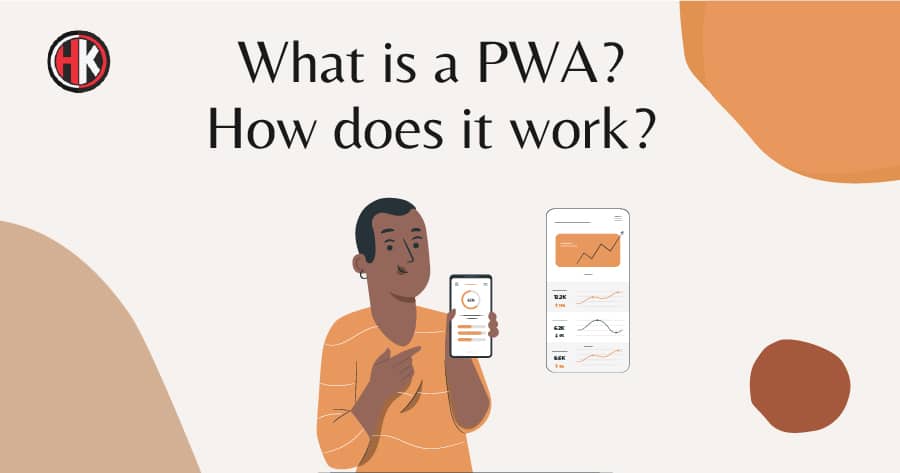
Have you ever noticed the “click here” banner like above while browsing any website? When you press the button, the “application” installs itself in the website’s background. During the opening of this application, it is available in your app section.
Now you can even browse the same feeling you were doing in your browser, but right now, in your smartphone. Today, PWA apps are the most talked-about application in the web development arena, and their credit goes to expert developers.
What you have now is a smartphone app that was downloaded from a web application. Therefore, getting the app was so convenient! This offers you to browse the content without the availability of the Internet.
This means you may have an offline access opportunity to the app! What an excellent option for you!
What we have discussed is a Progressive Web Application (PWA). Are you eager to know more about progressive web apps?
Table of Contents
What is a Progressive Web App?
You must have asked this question in your mind: what does PWA stand for? Let’s clear your doubts from your mind. PWA (Progressive Web Apps) is the most popular technology shift in the web world.
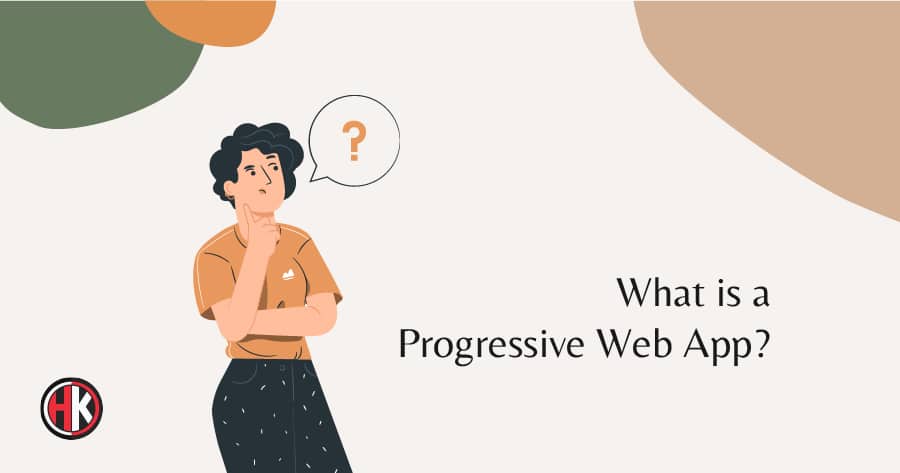
Unlike traditional technologies, PWA is a hybrid of websites and mobile applications. PWA is a website with all the advantages of an application. PWA offers a fast, more secure, and engaging mode of your site on an e-Commerce platform.
It can do everything that a native app offers—for example, operating everything offline, accessing your microphone, camera, and much more. PWAs are open for online businesses, including that if compared to web or PWA mobile software.
In recent years, PWA has gained immense momentum in the world of information technology.
Are you creating something for the web? I am confident PWA is a new technology. As we know, this is the best Progressive web app that made the far-fetched dream of installing web apps on smartphones. PWA is a kind of web application and is growing. Therefore, there is an excellent demand for PWA developers.
In this blog, we trying to give essential features of PWA to kick start the learning process of newbies. You must have a desire to know the advantages of PWA over the traditional web and mobile apps.
Day by day, the number of cloud and web apps is coming and gaining momentum in this digital world. As you will be aware, there are two billion websites worldwide, but only three hundred million are working.
As you have noticed, mobile apps are growing fast. Do you know over four billion mobile applications are running in the world? Internet users are using these applications to fulfil their needs.
To create a mobile app, companies are using various technologies. The simplest way to create a mobile app is the native apps. Few third-party platforms are also popular, like Xamarin, Flutter, Reactive Natives, and Native Scripts.
Developers use these platforms to build native Android apps. The most advanced technology in this field is progressive web apps.
Progressive Web App Features
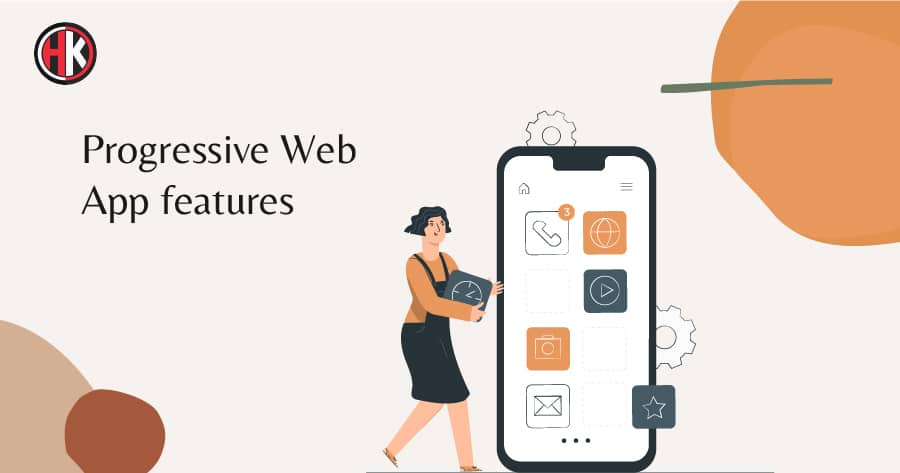
- It’s responsive.
- No need for any internet connection.
- You can use it in the same style as a regular application with the same interactions and navigation.
- It is re-engageable, meaning that once it connects the app to the Internet, the app works the way it should.
- Self-updates- Able to update themselves automatically, for better user experience.
- It’s served up with a Transportation Security Layer, therefore safe to use. Accordingly, unauthorized users can’t access their content.
- It is searchable, meaning that any search engine can find it.
- You may install it, and it is easy to add to your home screen through easy browser prompts.
- You can easily share with anyone.
- Instant Updates save time.
- Cross-Platform option.
- Smaller disk space.
- Registered service worker.
- More convenient to develop and maintain than Native application.
- Fast by design.
- Integrated with platform.
- No App store censorship risk.
- Economical to Market.
How Does Progressive Web App Work?

Technical Components of PWA
To know the functionality of PWA’s work. It is essential to understand the technical components of PWAs.
PWAs need your website to use HTTPS. A valid web manifest file and the registered service worker are also required. These technical requirements will help you get started.
HTTPS
HTTPS is the essential requirement for PWA, and most sites are using it these days, and It provides a better user experience, and visitors prefer these sites.
SSL provides an encryption layer around the data transferred between the server and browser. This facility helps to secure your valuable information.
The web App Manifest
The web app manifest — a JSON file— is the major component the browser loads in the site’s background. Furthermore, it also gives the refined its native app interface appearance. With manifest, any expert developer can control the way they display the app to the users.
The file permits a developer to get a centralized and secure place for the metadata of the app. The browser and platform use it to drive the add-to-home screen experience. A developer can also determine a splash screen and a theme colour for the address bar.
Service Worker with Offline Caching
This is another technical component, which is a registered service worker with a fetch event handler. It supports PWA— the offline work mode, background sync, and pushes notifications for native apps. The service worker is mainly a “next JS PWA” file running independently from the web app.
It responds to user interactions with the PWA app, including network requests made from pages it serves. Its life span is short because the service worker runs only to process a specific event.
PWA Architect
Creating On and maintaining PWAs entails separating static content from dynamic content.
Transport Layer Security (TLS)
Progressive web applications leverage the Transport Layer Security (TLS) obligation. TLS is the standard of protected and robust data exchange between two software. The integrity of the data needs to serve the website through HTTPS and by installing an SSL certificate on a server.
Push notifications
Push notifications are a most powerful tool for users re-bonding through the content and updates from websites they like. PW apps can send push notifications even when the browser is shut down, and the application isn’t active.
Background Synchronization
Background synchronization delays actions until stable connectivity are back. For instance, the message sent right before the internet connection fails will be pointed to consent and delivered as soon as the service is restored. So, servers can send regular updates to the software, allowing it to update itself when the connection is restored.
What are the Benefits of a PWA?
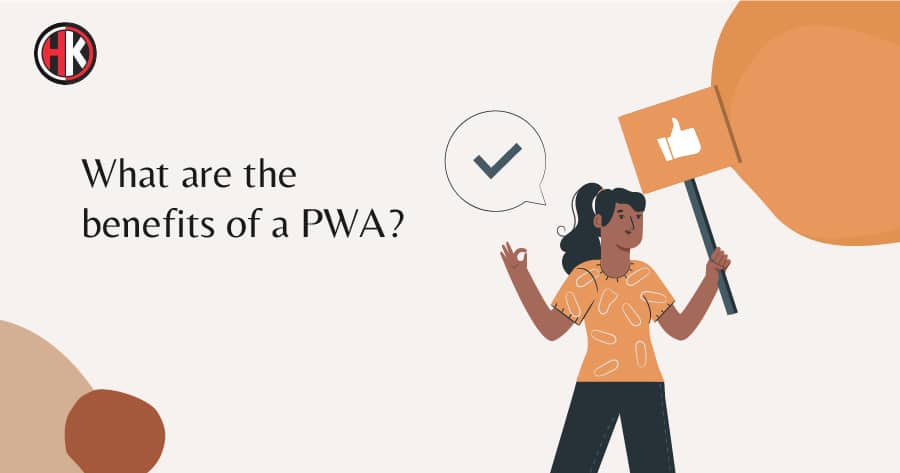
Various researchers have demonstrated that PWAs provide many advantages to businesses, for instance:
- Conversion increase.
- Session increase.
- Engagement increase.
- Lower bounce rate.
- Increase in page views.
- Increase in mobile traffic.
- Improvement of load and installation speed.
- Reduced use of device storage.
Let’s take a look at the key advantages of PWA for business. Their capabilities are exciting to discover why companies, from budding startups to market leaders, should choose for them.
Fast Installation
Fast installation is the essential benefit of advanced web application mobile. Unlike regular apps, it does not need a lengthy installation process. Therefore, the user experience improves. They can quickly download the app directly to their device.
They do not need to go to Google Play or App Store. This helps users to streamline the procedure and saves their time. By downloading an app, they may access it through the desktop icon.
Call to Action
Options are also available in a few browsers. They allow users when they visit respective websites. This feature is built into the browser.
They allow the application to increase its reliability. Users can also access the PWA through a URL that contributes to shareability.
Accessible in the offline mode:
Most of the websites can’t run without an internet connection. A proper and powerful net connection is mandatory to work with a website. On the other hand, mobile applications are self-contained.
They allow their users to operate them while not online. In short, you can say they offer convenient accessibility. PWA has such features which you may enjoy.
Acts like mobile
Among applications, PWA is the most popular web app and is designed like a mobile app. They offer the benefits of website functionalities—for example, dynamic data and various database access.
Most of the PWA takes advantage of the existing PWA framework and UI/UX. They allow offering great user experiences compared to websites. PWA still functions as a website, and search engines can index it. Therefore, PWA technology is outstanding to use for anyone.
Handling of hardware features
A unique aspect of native mobile applications for placement on a user’s mobile device is in sync with other apps and smartphone features. Another essential benefit of PWA is applying various mobile features, and push notification is one of them.
The top aspect of this application is that developers have complete control over their implementation. Moreover, they can take advantage of the hardware features of mobile devices.
For example, a native app can use the
- Contact list
- Alarm
- Calendar
- SMS and push notifications
- Camera
- GPS
- Geofencing
- Accelerometer
- Compass
We can think of progressive Web Apps as a toolkit. They offer users the potential to take advantage of device features.
No Requirement of App Store Submission
You don’t require publishing progressive web app development on the app store. Therefore, any trade does not have to go through the long and endless app store submission process. You can also update anything without no waiting for any kind of approval. We may download it when anyone wants to re-launch the application.
Great User Commitment
Researchers have proved that 17% of mobile users move apps to the home screen section. It makes PWA more competitive with web apps. There are some valid reasons people decide to use the PWAs.
The reasons are the simplicity to browse the apps, speed of access, and the frequency of apps are the best components determining their decision. The feature push notification also plays a vital role in influencing their decision in the application.
Simple Updates
PWA users are free from updating the application each time a developer publishes a new version. Users may experience access to the latest updates. Updates process helps companies to neglect the issue referred to as software fragmentation.
Low Development Price
Another benefit of this software is that it does not require different versions for different devices. An individual progressive app solves the requirements of all endpoints on which it works. Therefore, it reduces the efforts that developers provide.
At last, the price of building a progressive web app decreases. The average cost is far lower than a native mobile app.
As you know, to boost business, several companies are looking for “AngularJS developers“, call us for the best solution.
Are you interested to learn about “Flutter“? Read our most informative blog named “Why is Flutter the best choice for cross-platform application Development”?
Cons of Progressive Web App
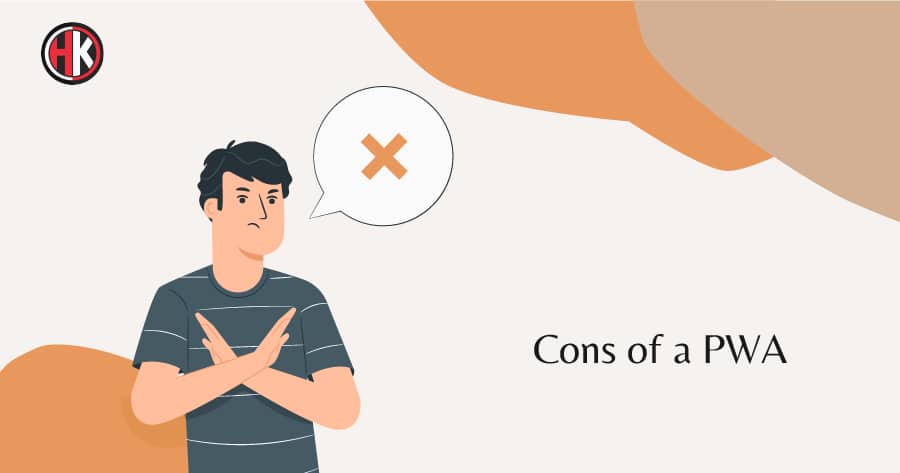
Increased Battery Uses
PWA is still web apps despite its progressiveness. They do not support native app features like fingerprint scanning, advanced camera control, Bluetooth, geo-fencing, inter-app communication, and vicinity sensors.
Also, be aware that sharing an app through a URL is easy and needs an internet connection. It drains the device’s battery faster than a native app.
Search Traffic Losses
Presence on app stores eliminates various steps users take before operating the application. The web traffic can be redirected to an app store to display the app to the users. The unavailability of the app store leads to traffic loss on search engines.
Progressive Web App Example
Find the list of PWA app examples that have successfully developed their business in their segment.
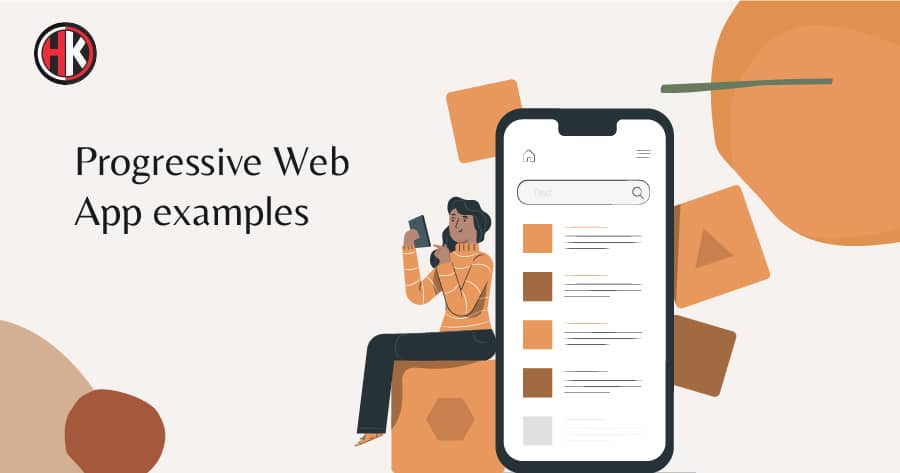
Shopify
The first PWA example is Shopify. This is the most popular eCommerce platform. They developed an application, “Litefy app.”
This app allows business owner to upgrade their online themes into PWAs. This platform offers retailers to get all the advantages of a progressive web app experience.
They have the power to engage customers and retention. The site is available for offline mode, convenient to access the store, and simple interface. The platform does not charge any fee for the users.
In 2021, Twitter is the most popular social media platform with over three hundred million users. Users may share, create, and consume information. The site has developed the “Twitter Lite PWA” to enhance engagement and reduce data consumption.
Twitter’s primary feature is that it uses less than 3 % of the device storage space. The site consumes fewer data and allows its users to share their views as instant as possible.
MakeMyTrip
The MakeMyTrip is one of the best examples of PWA websites. This is the top travel company in our country, having over seven million visitors every month. As we know, the use of smartphones is increasing.
This is the best channel for booking hotels and tourist destination sites. The company has developed a PWA that has the company’s growth. The application has enhanced the conversion rate by reducing page loading time. It has also lowered the bounce rate.
BookMyShow
BookMyShow, India’s largest ticketing organization, and has over 50+ million monthly visitors. They encountered the highest bounce rates because their mobile website’s load speed and user experience weren’t up to the mark.
Their native app also faced issues because it needed heavy data. To get rid of the problems, BookMyShow introduced a PWA to deliver the best mobile web experience for its users. A PWA offers an easy movie-booking experience that would solve issues by optimizing speed and removing data constraints for the users.
Highlights
- 70%+ increase in their conversion rates.
- PWA is smaller than the Android app and iOS app.
- Less than three seconds to load and checkout PWA website within 30 seconds.
Besides these platforms, few others using PWAs are Uber, Padpiper, Pinterest, Spotify, Yummly, and Washington Post.
What’s the Difference Between a Native App and a PWA?
Both native apps and PWA have their strong points and drawbacks. If both are available, consider the aspects each option excels in. You decide which is the best for you and fits in your business
Choose PWA if
- Start and want a simple app for your customers- PWA needs no download and lets you connect with the user through push notifications.
- If you have low time and budget constraints- the PWA website takes less time and cost to develop and publish.
- Desire to improve brand awareness and SEO- PWA is just like any website and reaches comprehensive coverage.
Choose a Native App if
- Eager to build a name for your brand: Publishing apps on app stores enhances more trust and security with native apps.
- If interested to use advanced smartphone features- If geofencing is essential to UX or your brand needs perfect computing power.
The Future of PWA Apps
Various researchers have predicted that PWAs will substitute over 50% of applications by 2022. PWA technology is growing, and developers assume that it is the future of mobile development. In the world of the web- apps, renowned companies are facing stiff competition. Even online e-Commerce businesses are growing fast in recent years.

The current pandemic situation has also fueled the pace of online shopping and eLearning. Thus, PWA technology will maintain healthy growth in your existing business. It would be a wishful decision if you will invest in your business by accepting the PWA.
On the other hand, developers have shown that users are not downloading and keeping various applications on the smartphone. Today, top enterprises are seeking methods to slash the barrier and cost of mobile development. PWAs are the best option for them.
Also, read our recent informative blog, “Top 10 Finance APIs to consider in 2021.”
Final words:
Native apps and PWA are two choices for business owners. It delivers a mind-blowing experience for users with different strengths and drawbacks. At the End Decide which platform is suitable for your business? Which suits your project requirement?
Your optimum decision will boost your business. We should always welcome the latest technology to grow our business. If you have any plans for PWA “Hackerkernel” is one of the best organizations for you. We are one of the best companies of international fame. We can solve all your issues related to information technology.

Husain Saify
Founder & CEO
Hey, I am Husain Saify, the Founder and CEO of Hackerkernel. I like to share some valuable information about Industry. You can also Reach Out to me On Linkedin.hello@hackerkernel.com



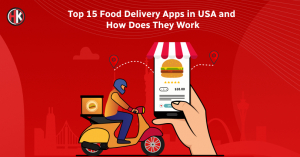
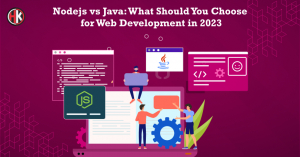
Hi, there, thank you for sharing such a great piece of content with us. It is really an informative and amazing post, it also helps me a lot.
Thanks For your Appreciation.
Thanks for sharing, this is very useful information!